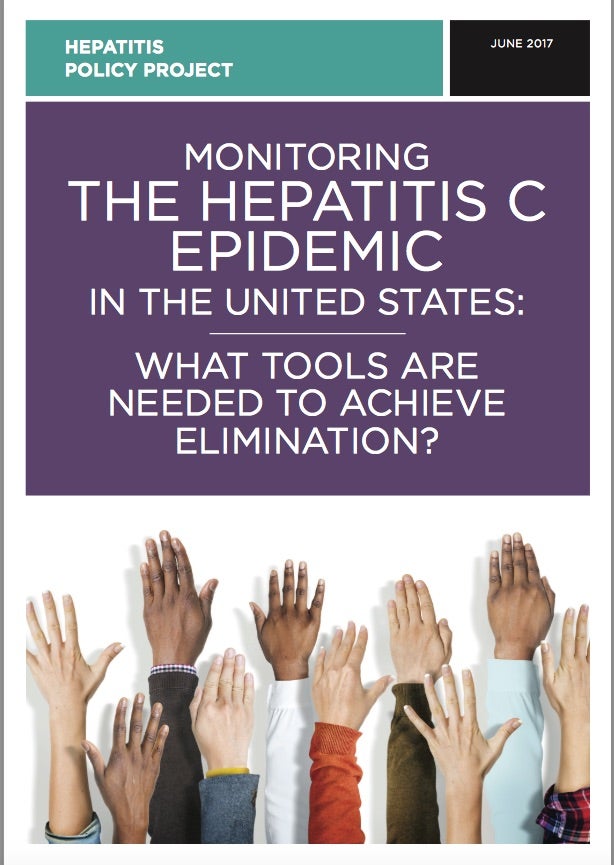The O’Neill Institute for National and Global Health Law’s Hepatitis Policy Project recently released a report offering recommendations to strengthen data collection and monitoring of cases of Hepatitis C in the U.S. in order for public health authorities to gain a better understanding of the effects of the disease and most effective strategies to curb the continuing rise in new cases. The report was informed by an expert consultation of key stakeholders working on viral hepatitis issues, and legal and policy analysis by Hepatitis Policy Project staff. The report can be found here.
There are currently 3.5 million Americans currently living with Hepatitis C, and approximately 33,900 new cases of the disease occurred in 2015. Despite this high prevalence, there is little actual data collected on individual cases of the disease, with many cases going unreported to public health authorities. Many cases that are reported offer little other information on gender, age, race, or risk factors that may have contributed to the person getting the disease, such as injection drug abuse. This type of information is critical for public health authorities to be able to identify those at risk for infection, prevent new infections, and get treatment and other health services to those infected to lessen the impact of the disease on their health. Data collection and the availability of hard numbers of the scope of the health issue are essential tools to influence the legislature and policy makers to improve resource allocation and prioritization of Hepatitis C interventions, and to change laws and policies that encumber those with Hepatitis C from getting the health care services they need.
The recommendations given in the report for improving monitoring of Hepatitis C are as follows:
1) Expand and standardize reporting to the CDC: Policy makers should phase up active surveillance of HCV in more states and territories, and as well as work with local jurisdictions in identified hot spots. The CDC’s Division of Viral Hepatitis (DVH), working with congressional appropriators, should develop a five-year plan for building the capacity to conduct active surveillance in the great majority of US states.
2) Utilize electronic medical records to collect data on HCV cases and the cure cascade: State epidemiologists should be funded to establish and utilize an integrated electronic medical records database, which would also provide matching metrics with cases, such as race, age, gender, and progress of treatment.
3) Fund epidemiologic research using clinical data sets: Clinical care data are a largely untapped resource that holds great potential for better informing responses to HCV and relies on data that already exist. In addition to the CDC, agencies across HHS and in other Departments such as Veterans Affairs and Defense should be directed to fund epidemiological research on HCV.
4) Integrate improved monitoring of HCV with responses to the opioid crisis: The Nation is increasingly recognizing the scope of the public health crisis we are facing related to the opioid abuse. Preventing and treating HCV must be elevated as a signature component of the national response to opioid abuse.
5) Establish and monitor HCV elimination plans across major US health systems: Strategic plans are needed to eliminate HCV in the United States. One example is the Cherokee HCV elimination project currently being implemented, where the tribe plans to screen 85% of Cherokee Nation health patients between the ages of 20 to 69 by the end of 2018. The Department of Veterans Affairs also is leading the way toward eliminating HCV in the Veterans Health Programs. Other public programs and systems should be tasked with developing their own elimination plans, including the Ryan White HIV/AIDS Program, the Health Centers Program, and various correctional systems in the US.
**A limited number of hard copies of the report are available for distribution. Please contact the author of this article to request copies. **




